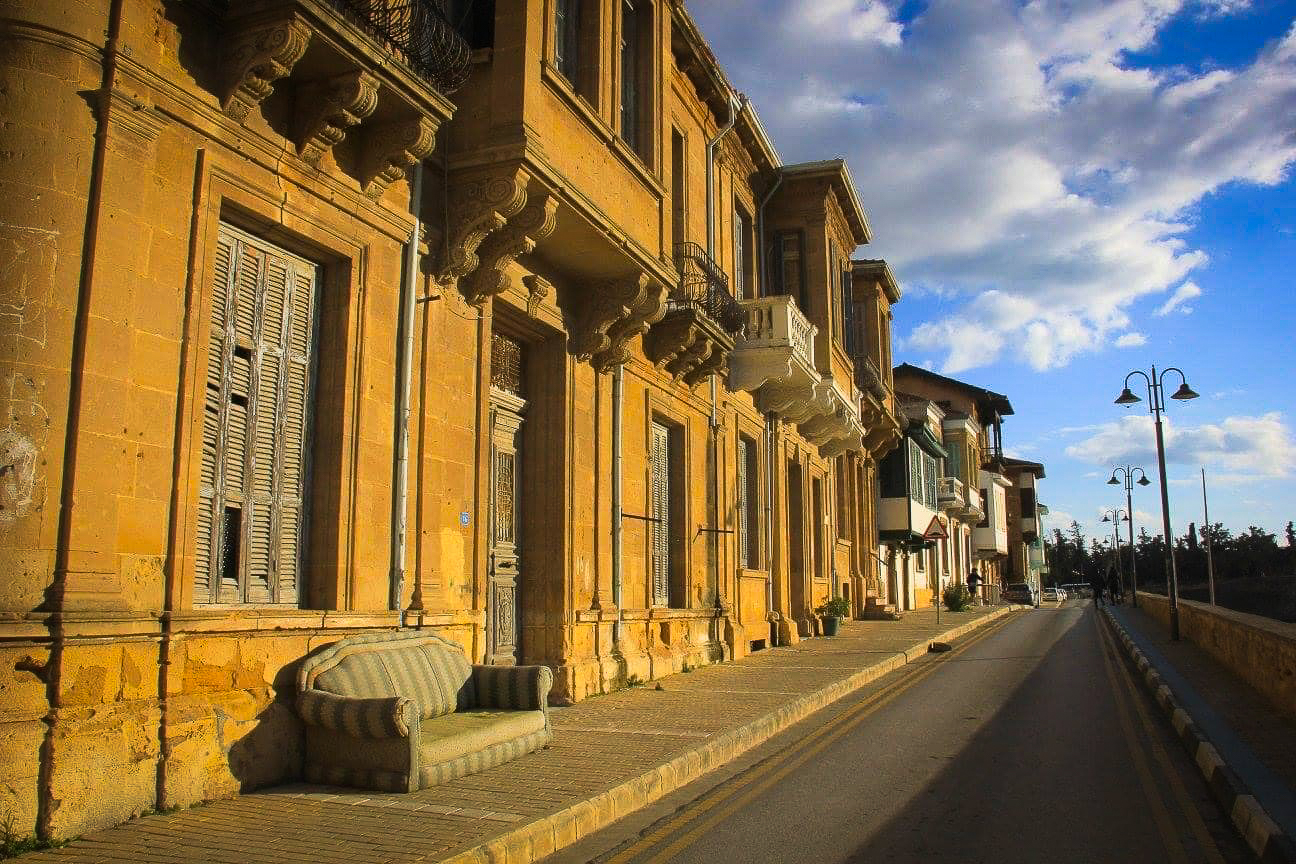The birthplace of Aphrodite and the crossroads between three continents, Cyprus has a mystic charm. Even its name hints at the sun, whiff of salty sea air, and leafy trees. Famous for its dazzling beaches, the shimmering Mediterranean, and excellent cuisine redolent of platters of mezé and bottles of sweet chilled wine, Cyprus is simply seductive. Its controversial political situation only adds to its enigma and it is one Mediterranean island to add to your travel wishlist. However, owing to its political situation, it is a slightly confusing place to visit, and here are some facts to know about Cyprus (North Cyprus) before your trip.

One of the sights of Lefkoşa in north Cyprus
Table of Contents
Entering north Cyprus

The boundary of the UN buffer zone between south and north Cyprus as seen from the southern side
The last divided capital in the world
Nicosia, the capital city of Cyprus is the world’s only divided capital. It is divided by ‘The Green Line’, also known as the UN buffer zone. Cyprus has been divided since 1974 when Turkey invaded the north in response to a military coup on the island. United Nations troops still patrol the divide today. The most important airport in northern Cyprus is Ercan International Airport. Despite the embargo on international flights to this airport, there are air services available only via Turkey. The Cypriot government considers entering via Ercan airport illegal. That’s why most people who visit northern Cyprus land at Larnaca in the southern part of the island and cross the border.

Nicosia is Lefkoşa in north Cyprus
The three crossing points between the north and south
There are three official crossings between northern and southern Cyprus. These are namely: Pergamos/Pyla, Ledra Street in Nicosia (Lefkosa as it is called in northern Cyprus), and Markou Drakou or the Ledra Palace crossing. Since we were on an official tour, we had a pre-arranged transfer from Larnaca airport to our hotel in North Cyprus. We crossed over at Pergamos. First, we went through the British Sovereign Base Area (a British military base) before entering the UN Buffer zone. At the Turkish checkpoint, our papers were perused once before we were waved through. It was pretty uneventful and the most important thing to remember is to retain your transfer papers until you are back in south Cyprus.

The ruins of Bellapais Abbey, near Kyrenia
Differences between south and north Cyprus
Since Cyprus has two main ethnic groups, each vying for more important than the other, many towns and cities in North Cyprus are known by two names. One name is of Greek origin, while the other of Turkish. For example, Kyrenia is the Greek name of the Turkish town name of Girne. Similarly, Nicosia is also called Lefkoşa.

Inside the Agios Mamas Church, North Cyprus
Cyprus is rich in history
Cyprus has been coveted since ancient times. Numerous foreign invaders have left their marks on the island and its history is both tumultuous and multi-layered. That is why Cyprus’s landscape is strewn with archaeological riches belonging to different eras and cultures in history. There are Neolithic dwellings, Bronze Age and Phoenician tombs, remnants of once-mighty city-kingdoms, Roman mosaics, mountaintop castles, and Byzantine churches – embellished with renowned frescos – lying scattered through the countryside. While strolling the Cypriot cities, one can see the preserved architectural legacy of the Lusignan, Venetian, and Ottoman periods along with graceful British colonial buildings.

Kyrenia is called Girne in north Cyprus
Visas and entrance permits



Selimiye Mosque is the highlight of the capital city of north Cyprus










Follow the blue line to explore the sights of Lefkoşa, north Cyprus

Cathedral of St. Nicholas


